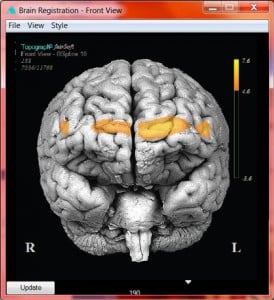
fNIR 2000 Series Advantages
- Most Flexible–Configurations for various application and the most comprehensive line of sensors in the industry (including new through the hair sensors)
- Best Value–The lowest price in the industry with cutting-edge engineering, the highest quality material, and robust data collection
- Shortest Prep Time–easy sensor application, calibration, and baselining shorten preparation time and operator’s learning curve
- Most Powerful and Friendly Analysis Tools–Implement the most advanced analysis tasks without any programming
- Least Prone to Systemic and Motion Artifacts–Near Sensors reduce systemic artifacts & software provides tools for post-hoc removal of Systemic Artifact
- Least Intrusive–18-optode sensor weighs around one once (32 grams)
- Lower noise almost twice as efficient LEDs
- Much More Compact
- Higher Frame Rates E series 2 Hz, M series 4 Hz, C series 10 Hz
- Two Way Synchronization
- No Isolation Transformer Required
fNIR is an optical imaging technology that measures neural activity and hemodynamic response in the prefrontal cortex. Subjects wear an fNIR sensor (IR light sources and detectors mounted in a flexible band) on the forehead that detects oxygen levels in the prefrontal cortex and provides real-time values for oxy-hemoglobin and deoxygenated hemoglobin. It provides a continuous and real-time display of the oxygen changes as the subject performs different tasks. The Imager 2000S provides up to 54 channels of information for continuous NIR spectroscopy (NIRS). Systems includes an Imager 2000S control unit, sensors, and software for real-time data viewing and post-acquisition analysis.
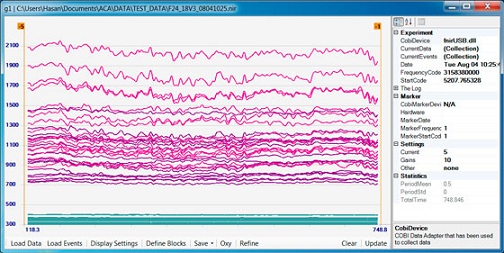
The fNIR data combines with other physiological variables such as ECG, respiration, cardiac output, blood pressure, electrodermal activity and stimulus response markers. AcqKnowledge software provides automated analysis tools for event related potentials and ensemble averaging. Combining the fNIR data with the other physiological signals provides researchers with a detailed subject assessment. fNIR is suitable for a wide range of applications, including Human Performance Assessment, Neurorehabilitation, Depth of Anesthesia Monitoring, and Brain Computer Interface. It integrates with stimulus presentation systems and BIOPACs virtual reality products.
fNIRSoft (fS) Pro Edition Software
fS is a stand-alone software package designed to process, analyze and visualize functional near infrared (fNIR) spectroscopy signals through a graphical user interface and/or scripting (for automation). Use fS viewer tools, data management tools, and a scripting engine to view the data in real time and perform post acquisition analysis. The included fS Pro Edition extends functionality with these additional tools not provided in fS Standard:
- fS Signal Analysis: Data Processing Tools
- fS Viewer: Temporal Visualization, Time Series Analysis Tools
- fS Viewer: Topograph Tools – including brain mapping and visualization over brain surface image
Use fNIR Systems with an MP160 Research System
Synchronize
With the optional BNC connector the Imager 2000M control device can send TTL pulses at the beginning and end of baseline, and at the beginning and end of a recording session. The trigger can be used to start the MP160 for data collection and to record the start and end of each fNIR segment.
Trigger Acquisition
Connect a BNC to BNC cable between the Imager 2000M control device BNC trigger and the Isolated Digital Interface Module (STP100C), External Trigger port, and set AcqKnowledge to External trigger.
Record Digital Triggers
To record the triggers, connect a Jumper Cable (JUMP100) between the TRIG and one of the Digital I/O lines on the rear of the Universal Interface Module (UIM100C). Turn on the digital I/O line and the system will record and display the triggers on the digital channel.
For additional details, review these items under the Support tab:
- fNIR and COBI Studio User Guide for data collection guidelines
- fNIRSOFT User Manual for a step-by-step guide for using fS, with an introduction to fNIR technology and a discussion of the Modified Beer Lambert Law (MBLL) that is integral to the analysis of fNIR spectroscopy signals
- fNIRSOFT Scripting Manual for fNIRSOFT programming and command line options
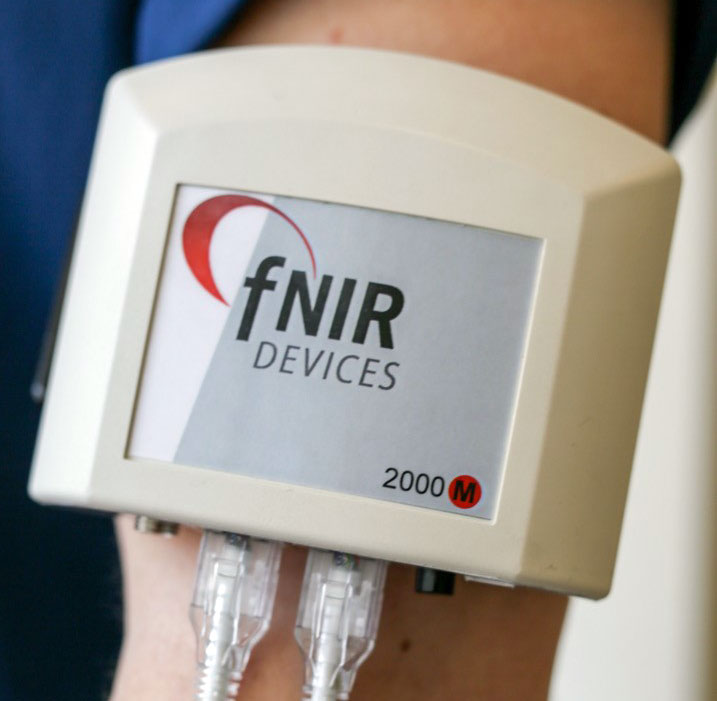




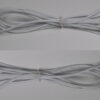
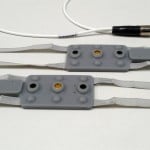
Stay Connected